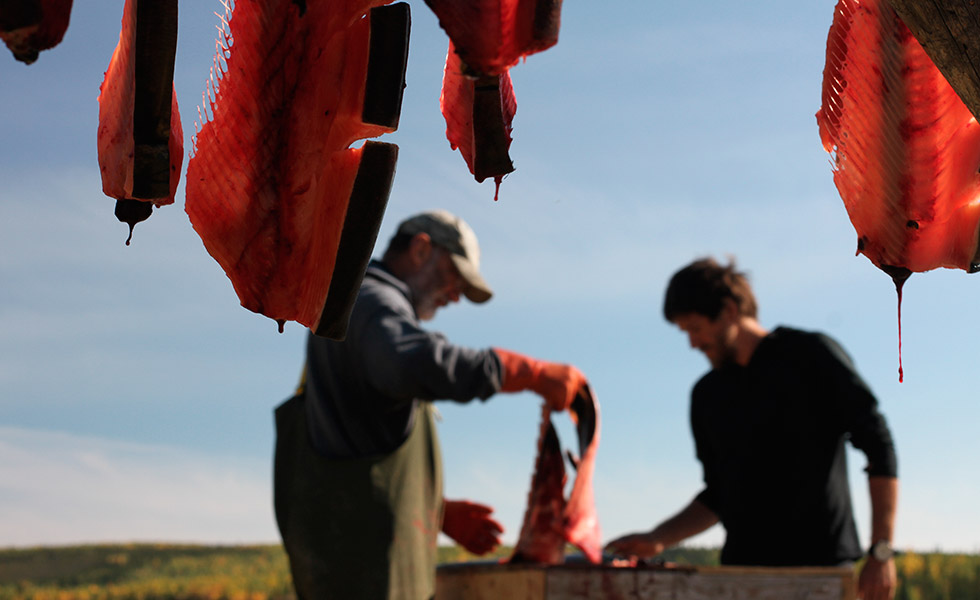I have always wondered what makes us embark on a trip and I believe that the bottom line is the stories. There is nothing as ancient and related to human nature as listening to stories. A story and a wish inevitably lead you to a map. It can be whether a flat and cold map like those from planes’ magazines, or a wrinkled yellowish and colorless one with a mystery X written on the center. A map is a wish waiting to be fulfilled. Once a line has been drawn on the map, everything else is easy: you have just to follow it.
![]()
My wish comes from adventure stories in the Grand North. Stories that many have hidden deep in their minds, waiting to be told. Authors such as Jack London, movies like The Bear or White Fang awake an abstract feeling of adventure, where cold, wild beasts, deep forests and the fight for survival all blend together. An old, distant idea, but with a familiar feeling as if already lived through it; something dormant in our genes, with a tendency to wake us up during the night, while cozy under the warm light of a lamp, curled up on a couch with a book in our hands. A book that takes us to distant places with a simple, precise map described within it pages.
It’s for these reasons that I have a desire to explore Alaska and Yukon, where I have spent a couple of years working for a company based on adventure trips. Last summer, the third one in the Yukon's river area, my plan was different; I wanted a trip that lasted longer and took place in a remote, hidden location. I would travel with an old friend of mine, David Requena.
It took a lot of time to prepare this adventure, spending several months working on designing a feasible itinerary through an almost unknown area. The traveling expenses in the North of Alaska and Canada are really high as there are few roads and you need to travel either by air or by water. Therefore, I focused on the two main and most famous highways of North America: Dempster Highway and Dalton Highway. I would connect both through several Yukon River's tributaries, starting from Eagle River, then crossing through Bell River, cruising all of the Porcupine River and into the Yukon River by the Dalton Highway.























